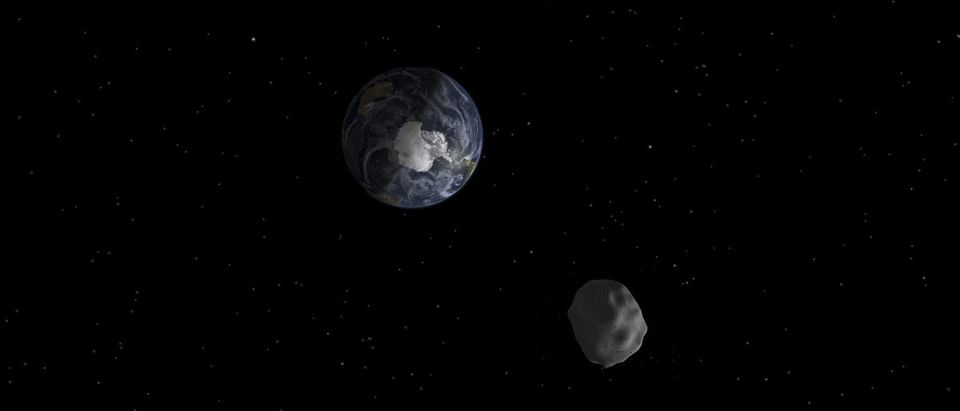NASA announced Monday that it will crash a spacecraft into an asteroid as part of an experiment designed to prevent dangerous asteroids from hitting Earth.
The Double Asteroid Redirection Test (DART) will launch Nov. 23 from Vandenberg Space Force Base in California and, using a process known as a kinetic impactor technique, deploy a rocket to hit an asteroid at a speed of 15,000 mph and alter its trajectory, according to NASA.
The test’s obejective is to analyze possible solutions to prevent an asteroid from hitting Earth, and it is NASA’s first mission to test planetary defense technology, according to the space agency.
It will target an asteroid system known as Didymos. The two asteroids are not a threat to Earth but will pass close enough to the planet to conduct the test, according to NASA. (RELATED: Asteroid Flew ‘Close’ To Earth, Estimated To Be Same Size As Great Pyramid Of Giza)
DART will launch toward Didymos using a SpaceX Falcon 9 rocket, NASA’s statement said according to The Washington Post.
SpaceX’s launch of the NASA Double Asteroid Redirection Test (DART) mission is planned for Nov. 24 at 1:20 a.m. ET on a Falcon 9 rocket from Vandenberg Space Force Base.
Press release: https://t.co/nSLLmxfo8s pic.twitter.com/KSSNHa9DLX
— Michael Sheetz (@thesheetztweetz) October 4, 2021
“Kinetic impaction involves sending one or more large, high-speed spacecraft into the path of an approaching near-earth object. This could deflect the asteroid into a different trajectory, steering it away from the Earth’s orbital path. NASA demonstrated on a small scale with the Deep Impact mission of 2005. If preparations were made in advance so that kinetic impactors were available upon detection, the National Academy of Sciences would require a warning time of at least 1 to 2 years for smaller asteroids,” NASA stated.
Didymos, meaning “twin” in Greek, was discovered in 1996, according to NASA. It consists of a main asteroid and a moonlet. The main asteroid, called Didymos A, is 780 meters in diameter (approximately a half mile long). Didymos B, the moonlet, is only about 160 meters in diameter (approximately a tenth of a mile long).
“The goal of the mission is to determine how much the impact alters the moonlet’s velocity in space, by measuring the change in its orbit around Didymos. Scientists think the collision will change the speed of the moonlet by a fraction of one percent and alter its orbital period around the larger asteroid by several minutes — enough to be observed and measured by telescopes on Earth,” NASA said.


